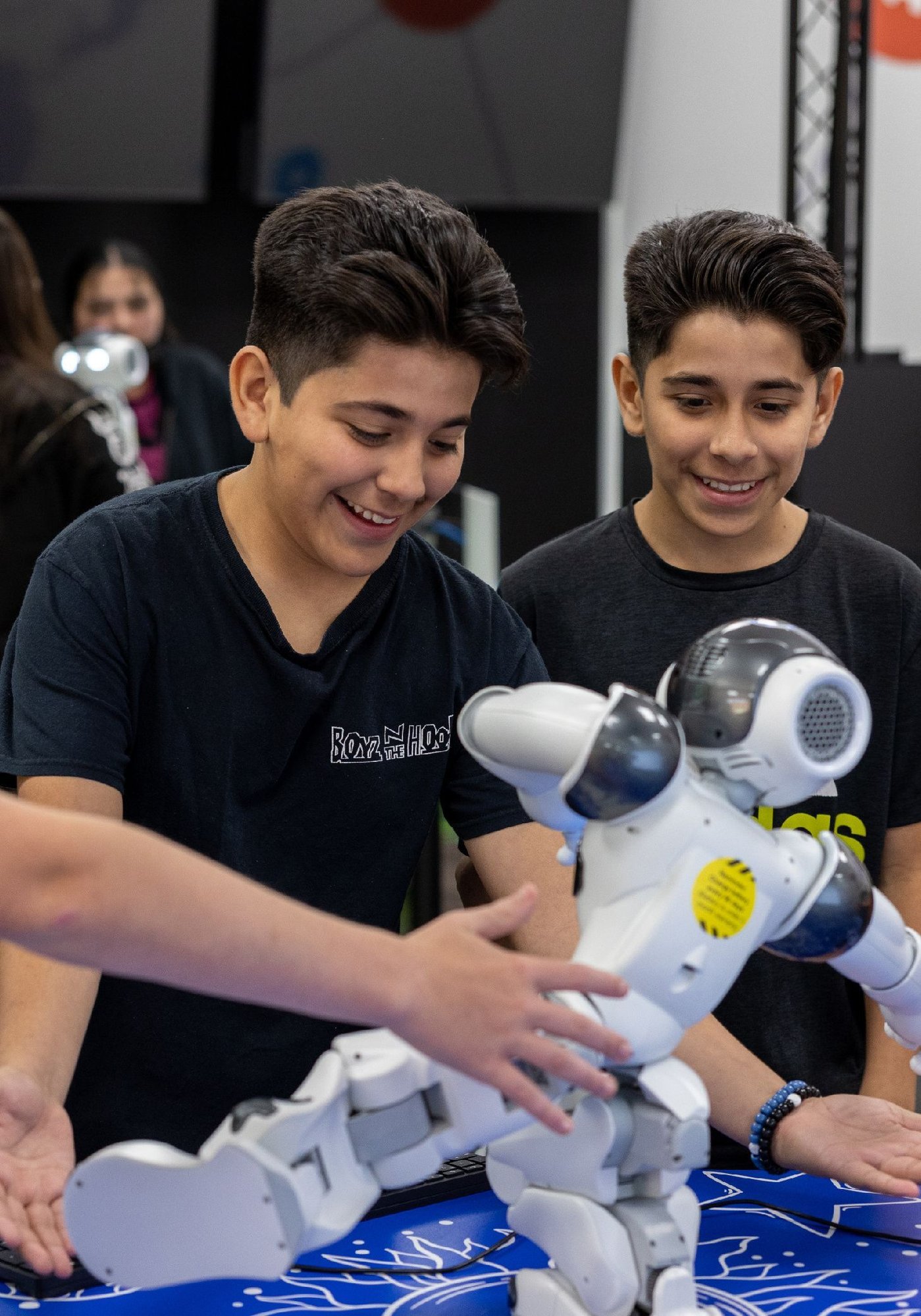
Capturing the attention and curiosity of young minds in today’s classrooms is more challenging than ever, with traditional methods often falling short in keeping students engaged. Our innovative K-12 robotics and STEM solutions empower teachers to revolutionize their teaching methods, transforming traditional lessons into dynamic, interactive experiences that captivate students' interest. By incorporating classroom robotics, virtual reality, and augmented reality, educators can create immersive learning environments that cater to diverse learning styles—whether visual, tactile, or kinesthetic.
These cutting-edge technologies not only make learning more enjoyable but also help students grasp complex concepts more effectively. STEM education tools, such as AI-driven learning resources and robotics kits, allow students to engage in hands-on activities that encourage critical thinking and problem-solving. Additionally, these tools are designed to be adaptable, benefiting students of all ages and learning levels, from elementary to high school. By integrating advanced technology into the curriculum, schools can provide a more inclusive and stimulating educational experience that fosters a love for learning and prepares students for the technology-driven world they will face in their future careers.
The AI LAB is a turnkey, state-of-the-art, modular, learning space designed to enable students rotation between the AI Stations. Each configuration includes more than 1,000 instructional hours and provides learners with practical hands-on activities exposing them to multiple disciplines and various scenarios in which artificial intelligence takes control of our lives. It gives students a unique and rich learning experience to ensure that they are ready for their careers, college, and life-in-the-2030s.


.jpg?width=1230&height=1360&name=cubelets-robot-blocks-mp%20(1).jpg)

In today’s workforce, computer literacy is essential for an ever-growing number of careers, yet digital learning and programming can sometimes feel abstract and disconnected from the real world for students. By introducing physical robots that immediately respond to programmed commands, students experience a tangible connection to their work, significantly boosting engagement and enthusiasm for learning. Hands-on interaction with classroom robots brings digital concepts to life, making abstract ideas more accessible and relevant. This real-world application proves far more effective when students can physically see and touch the results of their programming efforts.
Moreover, programming robots not only enhances computer literacy but also fosters critical thinking and problem-solving skills, essential traits in the STEM fields. K-12 robotics and STEM solutions bridge the gap between digital learning and real-world applications, empowering students to become active participants in their education. By integrating these tools into the curriculum, educators can ensure that students are not only prepared for future careers but are also equipped to thrive in a technology-driven world.
Educational robots are certainly excellent for teaching robotics and computer programming, but the data from the sensors and the physical functions are great sources for exploring math and science in real world scenarios. However, teachers don’t have to wait to pull out the robots for only STEM subjects. Let our VR technology help transport students to places and cultures for social studies classes. Have our drones and autonomous cars help students read maps and navigate other transportation rules and safety.
Utilize the programmable nature of many of our robots to teach a myriad of subjects like vocabulary, storytelling and reading comprehension, and so much more. All the while, this technology promotes critical thinking, communication, and collaboration as students share the physical technology and the learning space.



Research shows that integrating STEM tools like robotics, coding, and virtual reality into K-12 education leads to significant improvements in engagement, academic performance and student engagement. Studies have found that students who participate in hands-on STEM programs, which include elements like robotics and coding, tend to score higher on standardized math and science tests. These tools help demystify abstract concepts, making learning more accessible and meaningful. Additionally, the hands-on nature of these activities enhances critical thinking and problem-solving skills, essential for success in STEM fields and beyond.
Beyond academic gains, these tools also boost student motivation and engagement. Interactive learning experiences such as programming robots and exploring virtual environments make lessons more dynamic and enjoyable, leading to higher attendance and active participation in class.


Schools are embracing VR (virtual reality) tours to transform the learning experience and immerse students in new environments. VR allows students to explore historical sites, scientific phenomena, careers and far-off places without leaving the classroom, making learning more vivid and memorable. By integrating VR, schools can provide experiences that would otherwise be impossible, deepening students’ understanding and engagement with the material. This technology also encourages curiosity and creativity, allowing students to interact with content in a way that’s both exciting and educational. As education evolves, VR tours offer a powerful tool for bringing the world into the classroom, preparing students for a future where technology plays a central role.



Local Service, tailored to YOUR needs!
With RobotLAB, you get more than just robots - you gain a dedicated, LOCAL robotics partner.
We offer comprehensive services including on-site deployment and training, account management, content creation, system integration, and preventive maintenance. Our expert team provides detailed Standard Operating Procedures and cheat sheets to support your staff. With locations nationwide and globally, our sales, service, and repair centers are always nearby.

Affordable Monthly Payments on Robots
Opt for financing to spread out payments, maintain cash flow, and ensure your financial flexibility remains strong.
Our comprehensive financing options simplify the process of bringing a robot to your organization, ensuring affordability and ease. Collaborating with trusted finance partners, we shop for the most competitive rates tailored to your credit profile and unique needs. This ensures you can benefit from manageable monthly payments, bringing advanced robotics technology within your reach without financial strain.




.webp?width=124&height=124&name=image%20(1).webp)
.webp?width=169&height=87&name=image%20(2).webp)










.webp?width=124&height=124&name=image%20(1).webp)
.webp?width=169&height=87&name=image%20(2).webp)




Browse RobotLAB Locations nearby. RobotLAB is expanding nationally and internationally. If you are interested in joining our ever-expanding network of locations, and bring robotics and AI to your local community, please visit our RobotLAB Franchise page.





















